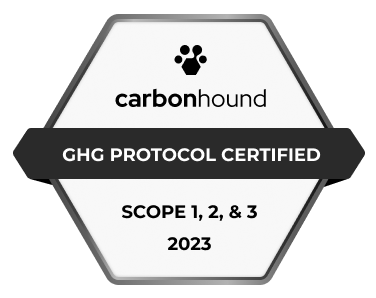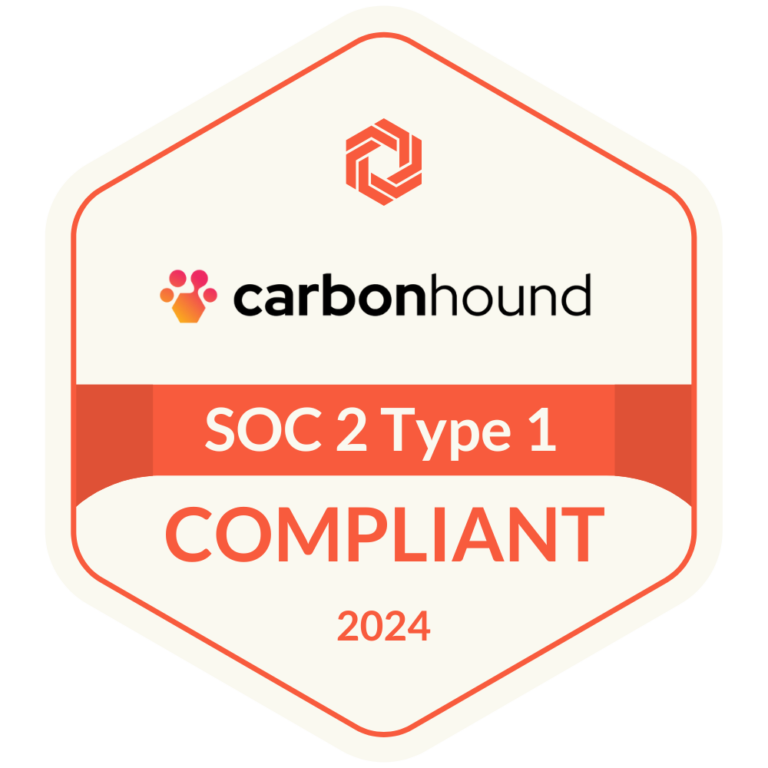FIFA promised that the 2022 World Cup in Qatar would be carbon neutral – it would buy carbon offsets to compensate for all the Greenhouse Gas(GHG) emissions generated during the event. However, the climate activism group Carbon Market Watch released a report in October 2022 claiming that FIFA had underestimated the greenhouse gas emissions from the event and therefore did not fulfill its carbon neutrality promise.
While FIFA estimated the total emissions of each stadium to be 0.2 MtCO2e (Megatonnes tons of carbon dioxide equivalent), Carbon Market Watch found that it underestimated it by a factor of 8. The actual emissions should be 1.6 MtCO2e – or the equivalent of annual emissions of almost 350,000 cars (EPA).
So why was there such a huge gap between the estimated and actual emissions?
Well, this massive underestimation of the emissions happened due to the choice of FIFA’s carbon accounting method.
The carbon emissions were allocated to each stadium on a “use-share” basis. To put it simply, this means that the number of days of the tournament were divided by the estimated lifetime of the stadiums to arrive at the share of the total emissions associated with the construction of these facilities attributed to the World Cup.
However, given these stadiums were constructed solely for the FIFA World Cup and would not be used for a sporting event of that scale again, the use-share carbon accounting method was unsuitable for this use case and FIFA’s image took a big hit:
This very public example helps illustrate the importance of taking a credible approach to carbon accounting in an current environment is currently one of high expectations and low trust.
So how do we go about addressing customer or stakeholder climate requests whilst protecting and growing our brand and business? Well, let’s start with why companies are typically taking action.
Why are companies are thinking about climate reporting?
So what are the different methods of carbon accounting?
Spend based Carbon Accounting
The spend-based method takes the monetary value of goods and services purchased by an organization and translates them into emissions using a spend-based emission factor.
Suppose you run a food business that specializes in making nut butters. You sell your products directly through your website and through major retailers. Your expenses may include payments to suppliers for your nuts, transportation costs to get your product to your customers and software to manage your inventory. To calculate emissions using spend-based carbon accounting, these financial values are multiplied by an emissions factor.
You might be wondering, “Where can we get the emissions factor from?”
Several organizations around the world have developed official emissions factor databases that can be used. Here are some of the most common ones:
Emission factors are often expressed in kilograms of CO2 equivalent emitted per dollar spent.
Pros
Spend-based carbon accounting is a relatively simple and fast approach that requires less data collection compared to the activity-based approach. It is often used when detailed activity-level data (e.g. the actual fuel burned by the transportation truck in the nut butter example) is not available or when a quick estimation is needed.
This methodology can also be helpful to understand at a high level where its worth diving deeper into your operations and identify large emission sources.
Cons
Unfortunately there are a lot of cons to this approach as it oversimplifies emissions estimation and often results in inaccurate emissions calculations.
Most calculations are done by looking at sector averages per dollar spent, many will even use input/output tables that try to estimate the impact on the economy for every dollar spent in that sector. (E.g. if you spend 1 dollar on software you create 0.20 cents in software consulting, 0.30 cents in server usage etc.) This in theory helps us understand the impact of that dollar on the entire ecosystem but the problem is that these models don’t accurate account for international supply chains so are incomplete.
The second major problem with this approach is that it means that the only way to reduce my impact is by reducing my spend. Good luck getting to zero carbon and still having a business to run!
If I invest in more expensive lower carbon-intensity steel, then in a spend based approach I will be penalized for spending more on a lower carbon product. Spend based approaches can quickly get unhinged from the scientific reality of the decisions your team is making, ensuring that their best efforts go punished.
There are some providers that are trying to create spend based emissions for individual providers but it is still very difficult to find complete and comparable information that can be used at any sort of scale, but its definitely better than a sector based approach as it does start to allow your team to look at alternatives and get rewarded for those decisions.
Spend based approaches are really only useful for situations where you can’t get activity based data but want to represent that impact. Or if you are just starting on your journey and are using it as an educational opportunity.
Activity based Carbon Accounting
Activity based accounting relies on collecting data on specific activities or processes and applying appropriate emission factors to calculate emissions. This method involves a more detailed analysis of an organization’s activities and their associated emissions throughout the value chain.
Let’s return to our nut butter packaging example. If you use spend-based accounting to calculate the emissions of the transportation of your nut butter to your customers, you would multiply the invoice by a single spend-based emissions factor to calculate emissions. However, with activity-based accounting, your approach will require more comprehensive data collection and analysis.
You would request information from your transport supplier on their Scope 1 and 2 emissions that applied to you, like the distance travelled by their trucks to service your account and the types of trucks they were using.
Pros
The activity-based method allows for a more accurate measurement of emissions because it takes into account the actual fuels and processes that are occurring which are generating the Greenhouse Gases. This makes it much more reliable and ensures that when actions are being taken by your team, that they are rewarded for that action by seeing the reduced emissions in the reporting.
It ultimately provides a more detailed and accurate understanding of emissions sources and hotspots, enabling organizations to target reduction efforts more effectively.
Cons
The biggest challenge around taking an activity based approach is the access to data and effort. It can be significantly more time consuming and resource intensive than the spend. (but don’t worry, we’ve got you).
So is it fair to say that activity based carbon accounting is better?
It’s more accurate, yes! But both methods have their advantages and limitations. The choice between them depends on the organization’s available data, resources, and specific reporting or reduction goals. Some organizations may even combine both methods to achieve a more comprehensive understanding of their Scope 3 emissions and develop effective strategies to mitigate them.
Carbon accounting is a critical component of ESG and it provides a quantitative measure of the company’s impact on the environment, which could be used by various stakeholders like investors, banks, consumers and regulators.
So, choosing the right carbon accounting method is important. Inaccurate or incomplete data can lead to wrong ESG reporting which can cause reputation damage, legal liabilities, and financial losses.
What are the ramifications of inaccurate ESG reporting?
There are both social and economic impacts from inaccurate ESG reporting, here are just a few examples in a growing field:
- September 2023, Deutsche Bank’s DWS asset management was fined $19 million for making misleading claims about how it integrates environmental, social, and governance factors into its research and investment recommendations.
- November 2022, Goldman Sachs Group paid a $4 million penalty for its asset management unit’s failure to adequately consider ESG factors in certain investment products.
- Early 2022, a subsidiary of Bank of New York Mellon Corp. paid $1.5 million to settle allegations that it falsely implied that certain mutual funds had undergone an ESG quality review.
- October 2023 – New California legislation has fines up to $500,000 for misleading net zero claims
Regulators are starting to hold to account big corporates for these misleading claims. It’s a matter of time before these companies start asking all their stakeholders for better quality data on ESG to ensure they protect their reputation so if your product is sold by a major retailer, they may require you to submit your greenhouse gas emissions with just a few weeks’ notice and little guidance.

Tendril design studios was able to measure and report on their emissions in just three weeks, without any on-site experts.
Carbon accounting can be overwhelming, but it’s easy to get started
If you’re feeling overwhelmed at this point, we understand. Making decisions about which carbon accounting method to use and how to collect and organize the data is not easy and can require some experience as not every situation is black and white (unlike my golf game which is universally bad).
You have several options: using an Excel sheet, hiring a consultant, online one-off calculators or using expensive software designed for sustainability teams.
Starting with an excel sheet is the easiest way to begin, but unfortunately, it’s not very sustainable. It’s a tedious process to gather data from different sources, compile it, and calculate the associated emissions.
A consultant can provide guidance and are especially helpful on the strategic side, but they might give you templated excel sheets to fill out. At Carbonhound, we offer a more practical solution to make this journey easier for you through our automated software and climate experts ready to make. Feel free to message us if you have any questions.
Good luck on your journey! The hardest step is always the first one.
Automate your carbon accounting and data collection
Calculate your footprint, manage your climate impact, set targets, and track your progress – all in one place.
written by Naman Bajaj & edited by Sanders Lazier





